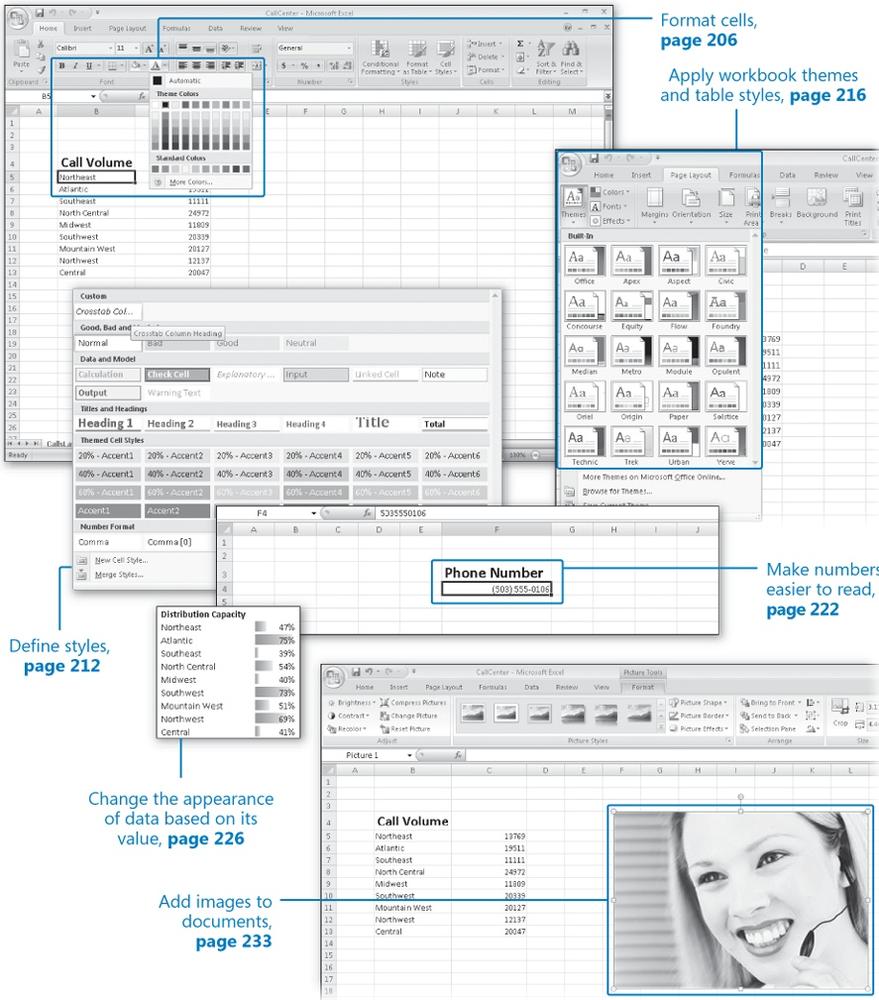In this chapter, you will learn to:
Format cells.
Define styles.
Apply workbook themes and table styles.
Make numbers easier to read.
Change the appearance of data based on its value.
Add images to documents.
Entering data into a workbook efficiently saves you time, but you must also ensure that your data is easy to read. Microsoft Office Excel 2007 gives you a wide variety of ways to make your data easier to understand; for example, you can change the font, character size, or color used to present a cell's contents. Changing how data appears on a worksheet helps set the contents of a cell apart from the contents of surrounding cells. The simplest example of that concept is a data label. If a column on your worksheet has a list of days, you can set a label (for example, Day) apart easily by presenting it in bold type that's noticeably larger than the type used to present the data to which it refers. To save time, you can define a number of custom formats and then apply them quickly to the desired cells.
You might also want to specially format a cell's contents to reflect the value in that cell. For instance, Jenny Lysaker, the chief operating officer of Consolidated Messenger, might want to create a worksheet that displays the percentage of improperly delivered packages from each regional distribution center. If that percentage exceeds a threshold, she could have Office Excel 2007 display a red traffic light icon, indicating that the center's performance is out of tolerance and requires attention.
In addition to changing how data appears in the cells of your worksheet, you can also use headers and footers to add page numbers, current data, or graphics to the top and bottom of every printed page.
In this chapter, you'll learn how to change the appearance of data, apply existing formats to data, make numbers easier to read, change data's appearance based on its value, make printouts easier to follow, and position your data on the printed page.
Note
See Also Do you need only a quick refresher on the topics in this chapter? See the Quick Reference entries at the beginning of this book.
Note
 Important Before you can use the practice files in this chapter, you need to install them from the book's companion CD to their default location. See Using the Book's CD at the beginning of this book for more information.
Important Before you can use the practice files in this chapter, you need to install them from the book's companion CD to their default location. See Using the Book's CD at the beginning of this book for more information.
Note
Troubleshooting Graphics and operating system–related instructions in this book reflect the Windows Vista user interface. If your computer is running Windows XP and you experience trouble following the instructions as written, please refer to the Information for Readers Running Windows XP section at the beginning of this book.

